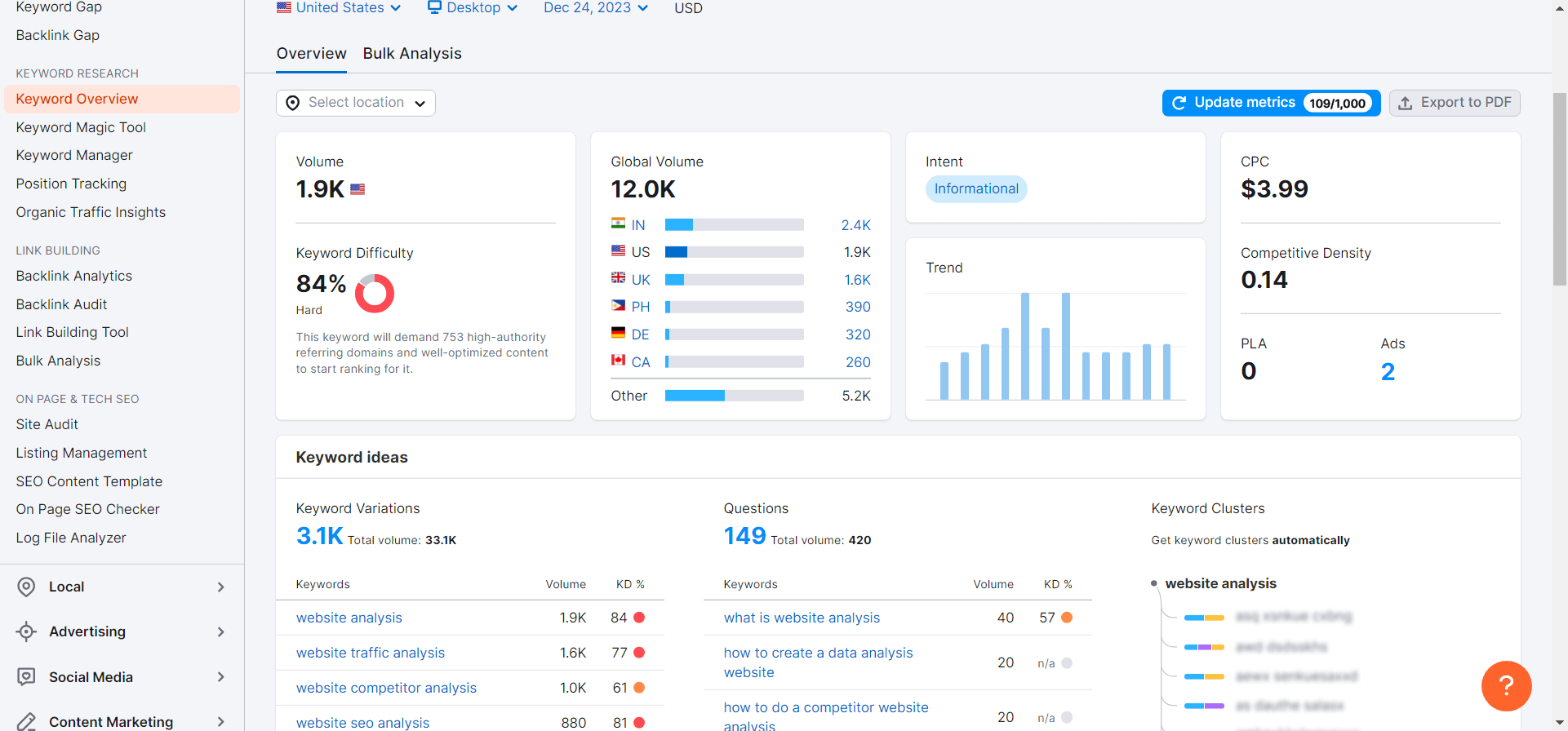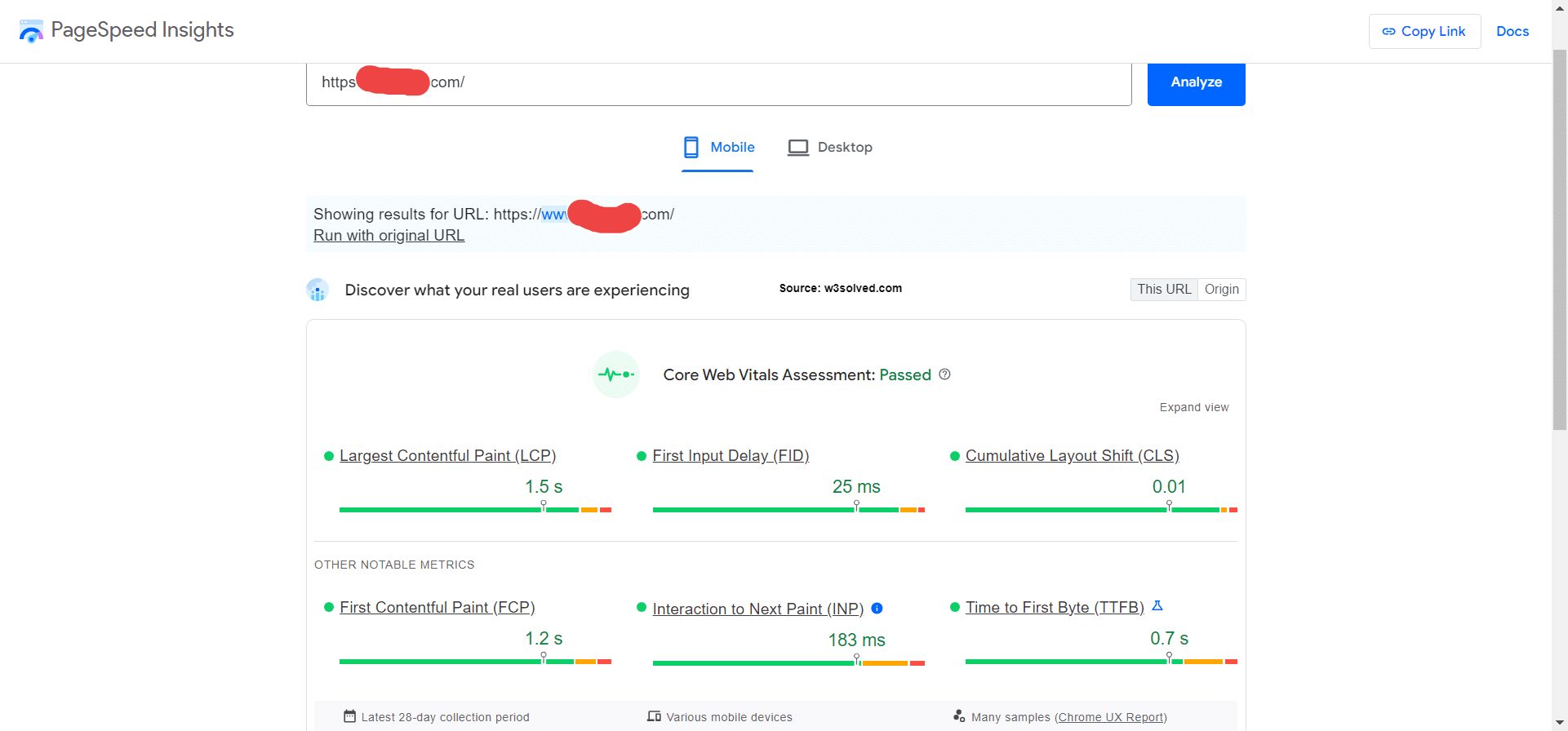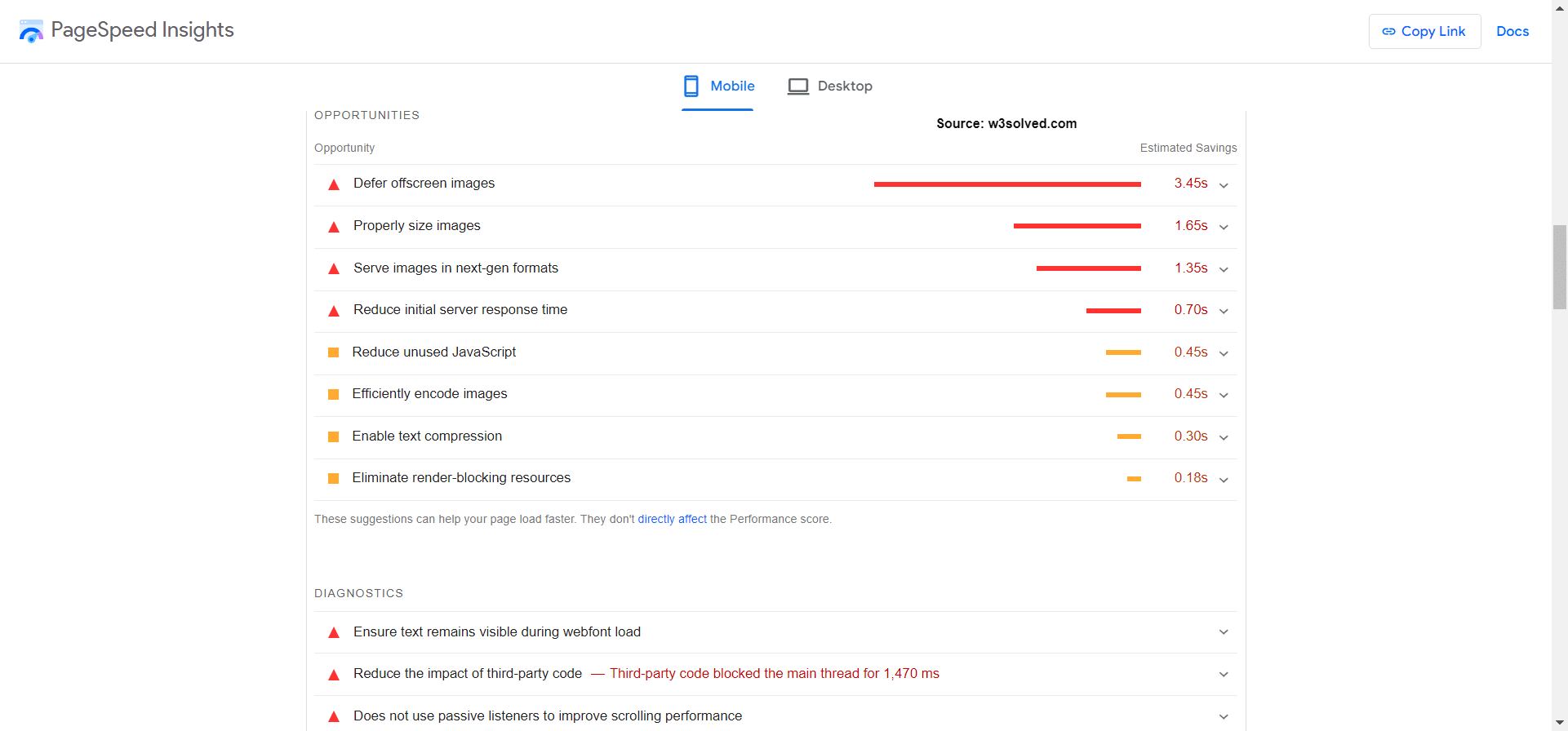In 2024, getting your website noticed is going to be more crucial than now. Search Engine Optimization (SEO) is the key to climbing the ranks and attracting more visitors. Let’s dive into some easy-to-understand tips to help your website shine in 2024. Remember that SEO is not guaranteed and it’s all upto google crawler if you will be ranked or not.
To sum up the post, here is the checklist for SEO in 2024.
- Mobile-Friendly Design
- Quality Content
- Relevant Keywords and Content Optimization
- Backlinks from Authoritative and relevant Websites
- Page Experience (including Page Speed)
- Technical SEO (Meta Tags, Headers, Structured Data)
- User Intent Understanding
- Secure Website (SSL Certificate)
- User Engagement and Dwell Time
Mobile Friendly Design
This refers to the importance of ensuring that your website is designed to function effectively and provide a positive user experience on mobile devices, such as smartphones and tablets. With the increasing use of mobile devices for internet browsing, Google and other search engines prioritize websites that are mobile-friendly in their rankings.
Why does it really matter? As per Exploding Topic, “There are approximately 4.32 billion active mobile internet users.”
Current predictions suggest over one billion people will be connected via 5G by 2025. China is where the most growth will occur. In some ways this isn’t surprising.There are 1.4 billion people living in China, that’s the largest population in the world. It’s over four times the size of the US population.
In the future it is believed that China will have three times more 5G connections than any other individual country.
It will only be possible because of their massive population size, the total number of connections in one country will be higher than the totals of the US, France, Canada, the UK, Germany, and South Korea combined!
Key Points:
Importance: In 2023, 56.96% of internet access comes from mobile device. That’s a significant increase of approximately 75% than before. There are several reasons why this is the case, such as convenience and improved phone technology.
A mobile-friendly design ensures that your website looks and functions well on smaller screens, making it more accessible to a broader audience.
User Experience: A mobile-friendly design enhances user experience by optimizing the layout, fonts, and navigation for mobile screens. This contributes to lower bounce rates and increased engagement.
SEO Impact: Search engines, including Google, consider mobile-friendliness as a ranking factor. Websites that are not mobile-friendly may see a decline in their search engine rankings, potentially affecting their visibility. it’s part of a broader page experience evaluation and not a system on its own.
Responsive Design: Achieving mobile-friendliness often involves implementing responsive design techniques, where the layout and content adapt dynamically based on the user’s device, creating a seamless experience across various screen sizes.
Quality Content
Creating content that is valuable, relevant, and engaging is at the core of a successful online presence. Quality content not only attracts and retains your audience but also plays an impactful role in search engine optimization (SEO). Here’s why it matters:
Relevance: Quality content addresses the needs and interests of your target audience. It provides valuable information, answers questions, and meets the user’s search intent.
Engagement: Engaging content keeps visitors on your site longer. This can include blog posts, articles, videos, or any form of media that resonates with your audience and encourages interaction.
Authority: Search engines favor websites that are authoritative in their niche. Creating content that demonstrates your expertise and authority in a particular subject helps improve your website’s overall SEO.
Backlinks: High-quality content is more likely to be shared and linked to by other websites. This contributes to the generation of backlinks, which are essential for SEO and improving your website’s credibility.
User Experience: Quality content enhances the overall user experience. Well-written, informative content with proper formatting and multimedia elements makes it easier for visitors to consume and understand the information.
Keyword Optimization: While creating quality content, it’s important to incorporate relevant keywords naturally. This helps search engines understand the context of your content and improves its chances of ranking for relevant searches.
Diversified topics: Various topics about a subject matter can cater to different preferences within your audience. Diversifying your content strategy contributes to a well-rounded and engaging user experience. Find out what your competitors have not provided that can be included in the topic.
Relevant Keywords and Content Optimization
Creating content that is valuable, relevant, and engaging is at the core of a successful online presence. Quality content not only attracts and retains your audience but also plays an important role in search engine optimization (SEO). Here’s why it matters:
- Incorporate keywords naturally into your content. You need to make sure a seamless reading experience.
- Avoid keyword stuffing; instead, focus on creating valuable and cohesive content. Google consider this practice as SPAM.
- Focus more on differentiating your content in your niche, comprehending the way your audience act.
- Stay attuned to evolving trends and changes in search behavior. You may follow the some key people like John Muller (Senior Webmaster Trends Analyst and Search Relations team lead at Google.)
- Your content should not only match specific keywords but also align with the underlying intent behind user searches. Now-a-days, it does not work in that way. BE NATURAL!
- Provide valuable information that directly addresses the needs and interests of your target audience.
- Beyond keywords, optimize your content structure for readability and user engagement.
- Craft compelling meta descriptions, informative headers (align with your content), and use structured data for enhanced context (this is for Google).
- Explore and incorporate relevant long-tail keywords to capture specific and niche audience segments.
- Long-tail keywords often contribute to more targeted traffic and better conversion rates.
- Regularly monitor keyword performance using analytics tools. For Example: Google Search Console or Google Analytics. Some of the paid tools can be, SemRush, Ahrefs, Moz or Ubersuggest
- Adjust your content strategy based on the performance of specific keywords and evolving search trends.
- You may need to update your content partially or fully depending on the situation. You may also need some quality backlinks depending on the SERP and competition of the keyword.
Backlinks from Authoritative Websites
Integrating backlinks from authoritative websites is a strategic component of an effective SEO strategy. Backlinks, also known as inbound links, are external links pointing to your website. Here’s why securing backlinks from authoritative sources is required:
- Backlinks from reputable and authoritative websites act as a vote of confidence in your content.
- Search engines interpret these links as endorsements, boosting your website’s credibility.
- Search engines consider the quality and authority of backlinks when determining your website’s ranking.
- High-quality backlinks contribute to improved visibility in search engine results pages (SERPs) by giving you rank for several relevant keywords to your Seed keywords.
- Quantity of inbound links is not a ranking factor. To be clear, this means just increasing your raw number of backlinks won’t help you rank higher. You have to consider other 199 factors of SEO ranking.
- Backlinks not only enhance your SEO but also drive direct referral traffic.
- Users clicking on relevant backlinks are more likely to be genuinely interested in your content. Hence, the engagement and website ranking will be boosted as Google consider engagement as a ranking factor.
- Building backlinks often involves establishing relationships with influencers, industry leaders, or other reputable websites.
- These relationships can lead to collaborations, partnerships, and further opportunities for exposure or business.
- Use a variety of anchor text in backlinks to ensure natural and diverse linking patterns.
- This contributes to a more organic and authentic backlink profile.
- Conduct periodic audits to assess the quality and relevance of existing backlinks.
- Disavow any harmful or irrelevant backlinks to maintain a healthy link profile.
Page Experience (including Page Speed)
Ensuring a positive page experience is vital for retaining visitors and optimizing your site for search engines. Page experience encompasses various elements, with page speed playing a pivotal role. Let’s explore the stages of optimizing page experience, particularly focusing on page speed.
- Conduct a thorough analysis of your website’s current page speed using tools like Google PageSpeed Insights.
- Compress and optimize images to reduce file sizes without compromising quality.
- Minimize the use of large multimedia files or implement lazy loading to defer loading until needed.
- Use next generation image formats like .Webp, .Avif. it will save your size significantly yet keep the quality.
- Compress and optimize images to reduce file sizes without compromising quality.
- Minimize the use of large multimedia files or implement lazy loading to defer loading until needed.
- The best and automatic way to optimize images is to use plugins like optimole or Smush by WPMU dev. These are freemium plugins.
- If you have a few images, you may also consider to compress your images manually. in that case, you can use Tiny PNG website.
- Enable browser caching to store frequently accessed resources locally on visitors’ devices.
- This reduces load times for returning visitors by serving cached content.
- Minify CSS and JavaScript files to remove unnecessary characters, reducing file sizes.
- Eliminate redundant code and streamline scripts for improved loading efficiency.
- Implement a CDN to distribute content across multiple servers globally, reducing latency.
- CDN ensures that users experience faster loading times, especially if they are geographically dispersed.
- Regularly monitor page speed metrics and make iterative improvements as needed.
- Stay updated on industry best practices and technological advancements for ongoing optimization.
- Page speed can be affected over time. Make sure you monitor it more frequently. If you do not have time or expertise, consider Hiring experts to monitor Page speed on behalf of you.
Technical SEO (Meta Tags, Headers, Structured Data)
Technical SEO plays an essential role in optimizing your website for search engines, ensuring that they can effectively crawl and index your content. This includes elements such as meta tags, headers, and structured data. Let’s explore the key stages in implementing effective technical SEO.
- Ensure that meta tags, including title tags and meta descriptions, are well-crafted and aligned with each page’s content.
- Incorporate relevant keywords naturally while maintaining a compelling and informative tone.
- Structure content using header tags (H1, H2, H3, etc.) to create a hierarchy and improve readability.
- Use only 1 h1 tag and there should be h3 tags under h2 tags. All h3 tags should represent h2 tags and so for others.
- Headers provide context to search engines about the content structure and hierarchy.
- Implement structured data markup, such as Schema.org, to provide additional context to search engines.
- This helps search engines understand the content and may lead to enhanced rich snippets in search results.
- Use canonical tags to indicate the preferred version of a page when there are multiple URLs with similar content.
- This prevents issues related to duplicate content and consolidates ranking signals.
- You may check it from Google Search Console.
- Generate an XML sitemap that includes all relevant pages on your website.
- Submit the XML sitemap to search engines to facilitate efficient crawling and indexing.
- Optimize the robots.txt file to instruct search engine bots on which pages to crawl and which to avoid.
- This is crucial for controlling access to specific areas of your site.
User Intent Understanding
Understanding user intent is a cornerstone of effective SEO, ensuring that your content aligns with what users are actively seeking. The stages of comprehending and catering to user intent involve a nuanced approach to content creation and optimization.
- Conduct thorough keyword research to identify terms relevant to your content and industry.
- Analyze search queries to understand the intent behind user searches.
 Create Comprehensive Content:
Create Comprehensive Content:
- Develop content that comprehensively addresses the topics and questions related to identified keywords.
- Aim to fulfill the user’s search intent by providing valuable and informative content.
- Cater to varied user preferences by offering different content types, including articles, videos, infographics, and more.
- Diversification ensures that your content resonates with a broader audience.
- Integrate long-tail keywords into your content strategy to capture specific user queries.
- Long-tail keywords often reflect specific user intent, leading to more targeted traffic.
- Gather user feedback through comments, surveys, and social media interactions.
- Utilize analytics tools to track user behavior and adjust your content strategy based on insights.
- Stay abreast of industry trends and shifts in user behavior.
- Adapt your content strategy to align with emerging user preferences and search patterns.
Secure Website (SSL Certificate)
Hackers do not like SSL in your website. You may not care about it but they do. Securing your website with an SSL certificate is a fundamental step in building trust with users and enhancing your search engine rankings.
The process involves implementing a secure connection, safeguarding user data, and signaling to search engines that your site prioritizes security, resulting in higher ranking. Most of the time, Google tends to ignore non-SSL websites as these sites are potentially vulnerable and easy to hack.
- Acquire a reputable SSL certificate from a trusted certificate authority (CA).
- Choose an SSL certificate type based on your website’s needs, such as Domain Validated (DV), Organization Validated (OV), or Extended Validation (EV).
- Update internal links and resources on your website to use the “https://” protocol.
- This ensures that all elements on your site, including images, stylesheets, and scripts, are loaded securely.
- Set up redirects to automatically direct users from the unsecured “http://” version of your site to the secure “https://” version.
- This prevents users from accessing insecure versions of your pages.
- Regularly check the status of your SSL certificate to ensure it is valid and has not expired.
- Renew the certificate before it expires to maintain a continuous secure connection.
- Implement regular monitoring for potential security threats and vulnerabilities.
- Stay informed about security best practices and update your SSL implementation accordingly.
User Engagement and Dwell Time
If visitors leave your website immediately after they land or does not navigate to another page, it will be a negative sign to Google. They consider this as “Bounce Rate”.
User engagement and dwell time are critical metrics that not only reflect the quality of your content but also influence search engine rankings. Encouraging users to spend more time on your site involves strategies to captivate their interest and provide a compelling online experience.
It is not official that it is the factor for ranking in top 5 result.
- Craft content that is informative, engaging, and tailored to your target audience.
- Use a mix of media, such as images, videos, and infographics, to enhance content appeal.
- Implement clear and strategically placed calls-to-action (CTAs) to guide users to the next steps.
- CTAs can prompt users to explore more content, subscribe, or make a purchase.
- Ensure intuitive and user-friendly website navigation.
- A well-organized structure helps users easily find relevant information, keeping them engaged.
- Incorporate interactive elements like quizzes, polls, or surveys to boost user interaction.
- Multimedia content, such as videos and slideshows, can enhance engagement.
- Use analytics tools to track user behavior, including dwell time and page views.
- Analyzing this data provides insights into content performance and user preferences.



0 Comments